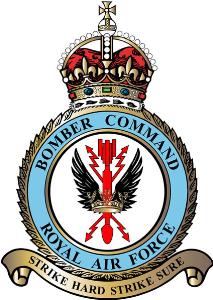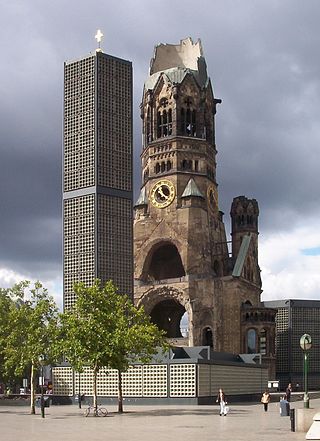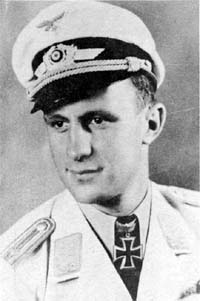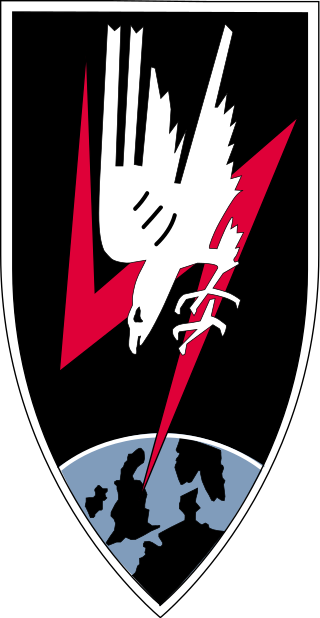
RAF Bomber Command controlled the Royal Air Force's bomber forces from 1936 to 1968. Along with the United States Army Air Forces, it played the central role in the strategic bombing of Germany in World War II. From 1942 onward, the British bombing campaign against Germany became less restrictive and increasingly targeted industrial sites and the civilian manpower base essential for German war production. In total 364,514 operational sorties were flown, 1,030,500 tons of bombs were dropped and 8,325 aircraft lost in action. Bomber Command crews also suffered a high casualty rate: 55,573 were killed out of a total of 125,000 aircrew, a 44.4% death rate. A further 8,403 men were wounded in action, and 9,838 became prisoners of war.

Royal Air Force Dishforth or more simply RAF Dishforth is a former Royal Air Force station near Thirsk in North Yorkshire, England. Opened in 1936, the base was used as a bomber airfield during the Second World War with both British and Canadian squadrons flying missions from the airfield. After the war, the base was used by various squadrons and training units before being disposed of in 1992 and handed over to the Army Air Corps.

Berlin, the capital of Nazi Germany, was subject to 363 air raids during the Second World War. It was bombed by the RAF Bomber Command between 1940 and 1945, the United States Army Air Forces' Eighth Air Force between 1943 and 1945, and the French Air Force in 1940 and between 1944 and 1945 as part of the Allied campaign of strategic bombing of Germany. It was also attacked by aircraft of the Red Air Force in 1941 and particularly in 1945, as Soviet forces closed on the city. British bombers dropped 45,517 tons of bombs, while American aircraft dropped 22,090.3 tons. As the bombings continued, more and more people fled the city. By May 1945, 1.7 million people had fled.

No. 100 Group was a special duties group within RAF Bomber Command. The group was formed on 11 November 1943 to consolidate the increasingly complex business of electronic warfare and countermeasures in one organisation. The group was responsible for the development, operational trial and use of electronic warfare and countermeasures equipment. It was based at RAF stations in East Anglia, chiefly Norfolk.

No. 3 Group RAF of the Royal Air Force was an RAF group first active in 1918, again between 1923 and 1926, then as part of RAF Bomber Command from 1936 to 1967, and recently part of RAF Strike Command from 2000 until it disbanded on 1 April 2006.
No. 90 Squadron RAF is a squadron of the Royal Air Force.

Royal Air Force Bassingbourn or more simply RAF Bassingbourn is a former Royal Air Force station located in Cambridgeshire approximately 3 mi (5 km) north of Royston, Hertfordshire and 11 mi (18 km) south west of Cambridge, Cambridgeshire, England.

During World War II, the city of Lübeck was the first German city to be attacked in substantial numbers by the Royal Air Force. The attack on the night of 28 March 1942 created a firestorm that caused severe damage to the historic centre, with bombs destroying three of the main churches and large parts of the built-up area. It led to the retaliatory "Baedeker" raids on historic British cities.

No 620 Squadron was a squadron of the Royal Air Force during World War II. During its existence it served as a bomber squadron, airborne forces and a transport squadron.

Wolfgang Falck was a World War II German Luftwaffe pilot and wing commander and one of the key organisers of the German night fighter defences. As a fighter ace, he claimed eight enemy aircraft shot down in 90 combat missions.

Hans-Heinz Augenstein was a German Luftwaffe military aviator and flying ace during World War II. A flying ace or fighter ace is a military aviator credited with shooting down five or more enemy aircraft during aerial combat. Operating as a night fighter pilot, he was credited with 46 aerial victories, of which 45 were four-engine bombers, all of which claimed in Defense of the Reich.
Gerhard "Gerd" Friedrich was a Luftwaffe fighter ace of World War II. He was one of night fighter ace scored 30 victories. All of his victories were recorded at night.
Günther Wolfgang Bahr was a German Luftwaffe fighter pilot and night fighter flying ace during World War II. He claimed 36 victories at night, plus one further daytime aerial victory, all of which were four-engine bombers, achieved in over 90 combat missions. He counted 37 victories over all. He was also a recipient of the Knight's Cross of the Iron Cross. Bahr died in April 2009 at the age of 87.

Nachtjagdgeschwader 3 was a Luftwaffe night fighter-wing of World War II. NJG 3 was formed on 29 September 1941 in Stade from Stab./Zerstörergeschwader 26.
Nachtjagdgeschwader 5 was a Luftwaffe night fighter-wing of World War II. NJG 5 was formed on 30 September 1942 in Döberitz.

Paul Gildner was a German Luftwaffe military aviator during World War II, a night fighter ace credited with 44 aerial victories, including two by day, claimed in approximately 160 combat missions making him one of the more successful night fighter pilots in the Luftwaffe. All of his victories were claimed over the Western Front in Defense of the Reich missions against the Royal Air Force's (RAF) Bomber Command.
Helmut Bergmann was a German Luftwaffe military aviator during World War II, a night fighter ace credited with 36 enemy aircraft shot down in 135 combat missions. All of his victories were claimed over the Western Front in nocturnal Defense of the Reich missions against the Royal Air Force's Bomber Command.

August Geiger was a German Luftwaffe military aviator during World War II, a night fighter ace credited with 53 aerial victories making him the nineteenth most successful night fighter pilot in the history of aerial warfare. All of his victories were claimed over the Western Front in Defense of the Reich missions, the majority at night against the Royal Air Force's (RAF) Bomber Command and one daytime claim over a United States Army Air Forces (USAAF) Boeing B-17 Flying Fortress.
Ernst-Georg Drünkler was a German Luftwaffe military aviator during World War II, a night fighter ace credited with 47 aerial victories, including two by day, claimed in 102 combat missions making him the thirtieth most successful night fighter pilot in the history of aerial warfare. The majority of his victories were claimed over the Western Front in Defense of the Reich missions against the Royal Air Force's Bomber Command.












